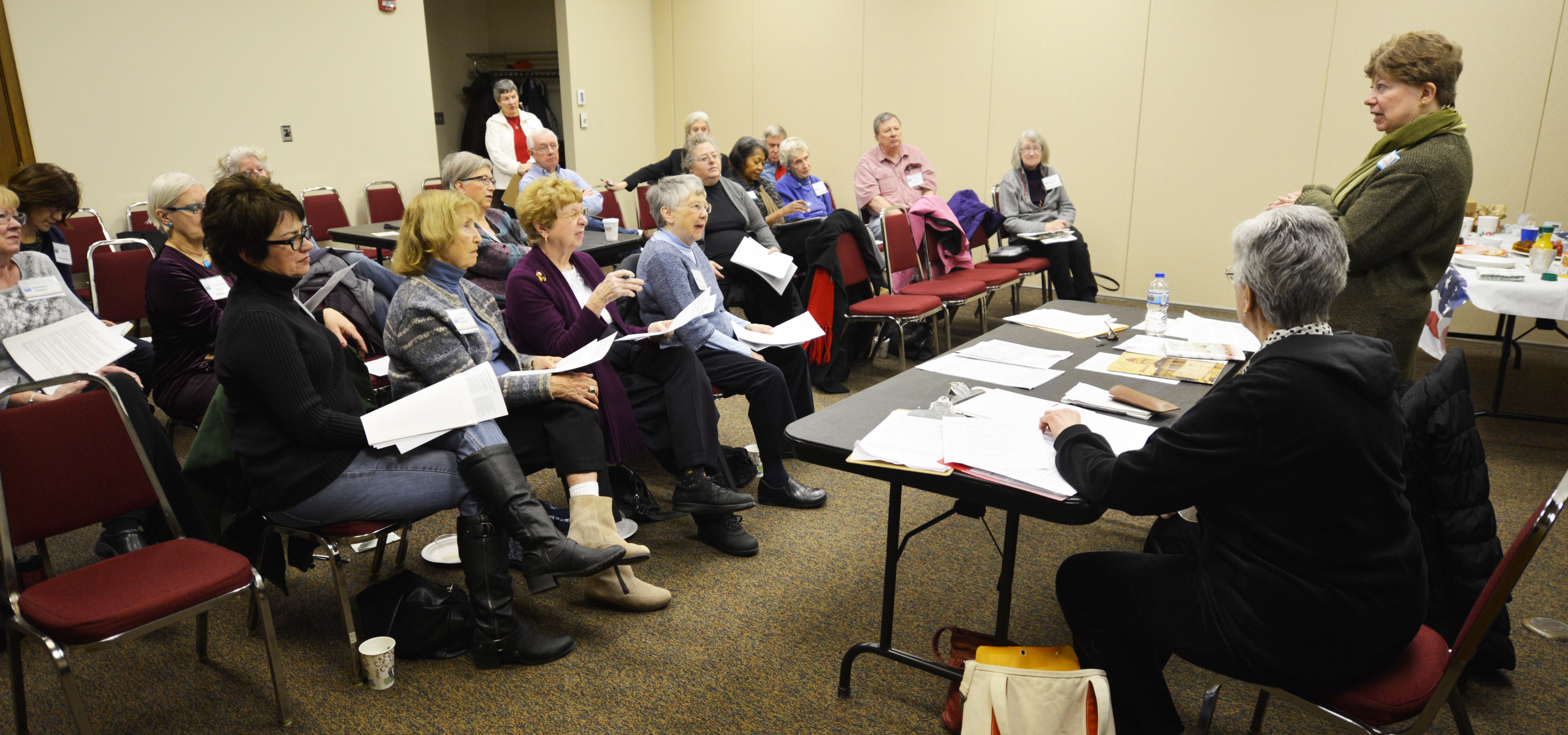
Photo by Pat Barcas
League of Women Voters of Illinois member Kathy Nesberg, right standing, discusses her group’s push to get an amendment on the November ballot to propose an Illinois Independent Redistricting amendment, which would establish a bipartisan 11 member independent redistricting commission to draw the maps for Illinois House and Senate Districts.
By Pat Barcas
Staff Writer
pat@foxvalleylabornews.com
Thursday, Jan. 9, 2014
LISLE— The Illinois jurisdiction of the League of Women Voters thinks gerrymandering is counterproductive for democracy, and they’re trying to introduce an amendment to the Illinois constitution on this November’s ballot that aims to redefine what politicians can and cannot do when it comes to drawing district lines.
“Right now, we have a system where they pick us, let’s change it so we pick them,” said Kathy Nesberg of the League of Women Voters of Illinois. Nesberg led a discussion on gerrymandering Jan. 4 in Lisle with the League of Women Voters of DuPage County.
Gerrymandering is the process of manipulating district boundaries, sometimes down to the exact household, in order to gain a political advantage when it comes time to go to the polls. The idea is, skew the district line in a certain direction, and those running for office may gain the votes they seek.
The group wanted to make the message clear: Gerrymandering benefits both Republicans and Democrats, and it’s wrong.
“When Democrats are in power and draw the lines in the Chicago area, the district lines come way out west, like a finger. The opposite is true when Republicans take power,” explained Nesberg.
The League of Women Voters is currently circulating petitions, and needs 296,000 signatures to get an amendment on the ballot this November. That’s eight percent of the number who voted in the last governors race.
“Running for office is tough. You can see why politicians would want it to be easier. Some say they will make real changes when they get elected, then after awhile, it just becomes the family business,” said Nesberg.
Under the current system, the General Assembly draws the state Senate and House districts after every census. Ninety seven percent of incumbent state legislators won their general election race in the last election, and two-thirds did not face a challenger.
The proposed Illinois Independent Redistricting amendment would establish a bipartisan 11 member independent redistricting commission to draw the maps for Illinois House and Senate Districts.
The commission would draw district boundaries that are contiguous, substantially equal in population, and in compliance with federal laws. Lines would also be drawn that would not dilute or diminish the ability of a racial or language minority community to elect the candidates of its choice.
A goal of the amendment is to keep everything transparent, holding public hearings throughout the state both before and after it releases draft maps. All commission records and communications between commissioners, who are to be selected by a special process, will be open for public inspection.
California, Arizona, New Jersey, and Iowa have all recently taken action against gerrymandering, and the League of Women Voters have observed and learned from these other states, soliciting the advice of civil rights experts and community based groups in Illinois over the past two years in crafting the amendment.
“The people do have more political power than the legislators, and this is the basis for the kind of government we wish we all had,” said Nancy Healy of the League of Women Voters of DuPage County. “Right now, the most important thing is getting these signatures.”
To request a petition for the amendment to reign in gerrymandering, visit www.independentmaps.org.
